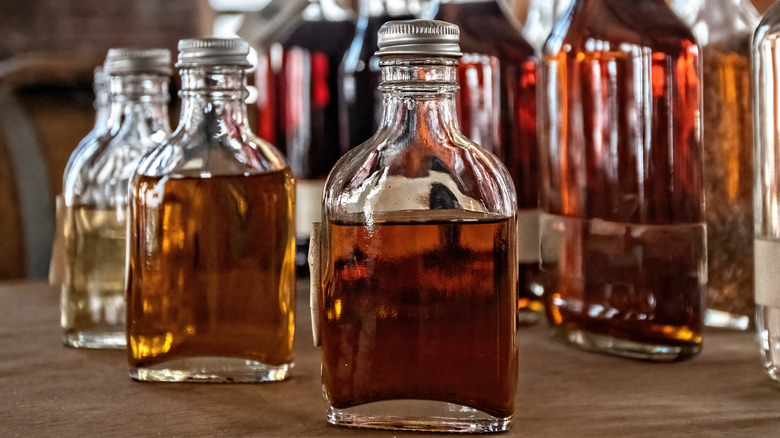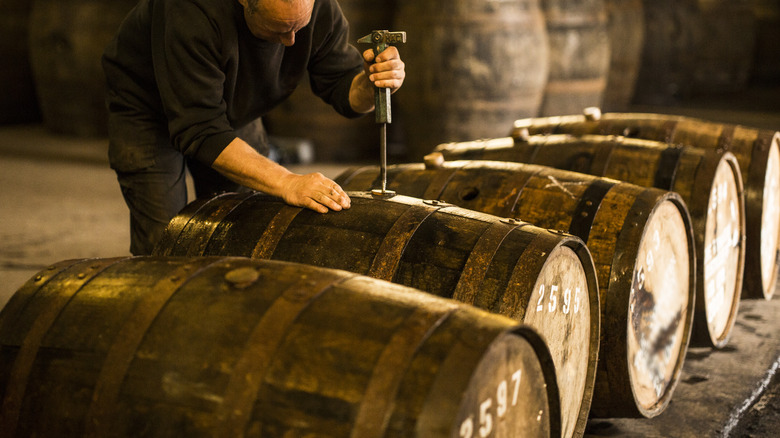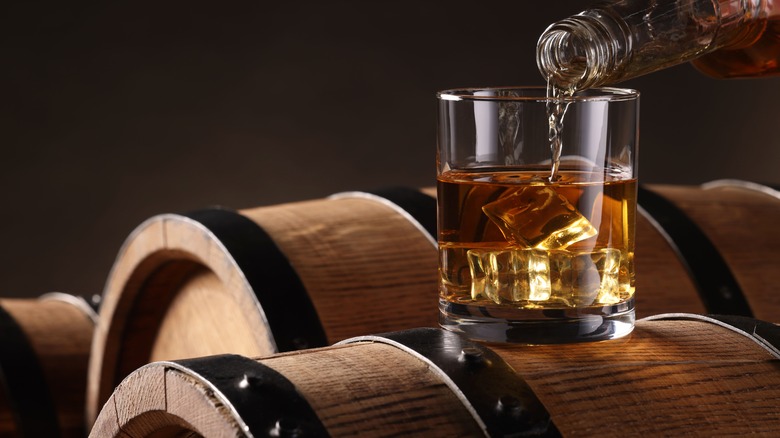What Makes Bottled-In-Bond Whiskey Unique?
We may receive a commission on purchases made from links.
We live in a glorious time for American whiskey. Back 30 or 40 years ago, there were only a handful of major brands, and some had fallen into states of disrepair, as consumers turned away from brown spirits in favor of vodka, tequila, wine, and beer. These days, there are hundreds of carefully crafted labels out there, both small and large, and most of the bourbon, rye, and other whiskey styles are delicious at any price point (though it does help to know the distilling and flavor differences between bourbon and whiskey). So, it may seem counterintuitive that one of the most popular "new" expressions for American whiskey is actually over 120 years old: the bottled-in-bond designation.
Over the past six or seven years, an increasing number of brands have released bottled-in-bond, or "bonded," expressions, and fans and collectors have been snapping them up. It's an official, legal measure of quality control and assurance. Even in an era where many whiskey makers are trying hard to make whiskey as authentically as possible, and even though there are now plenty of laws and guidelines in place to ensure the safety, quality, and integrity of distilled spirits, the bottled-in-bond classification still reigns supreme as a hallmark that the distiller and company want to assure you that what you're drinking is what they created — and that it's worth it.
The history of bottled-in-bond whiskey
In the late 1800s, whiskey flowed like water in America. But high demand and a lack of legal oversight meant that drinkers were at the mercy of the producers and tavern owners who bought barrels straight from the distillery. As author and whiskey educator Fred Minnick notes in his 2015 book "Bourbon Curious," an 1896 Congressional inquiry found almost all of the straight bourbon (another regulated classification) made by distillers was sold to middleman rectifiers, who often cut the product with inexpensive, clear-grain spirits to maximize profits before selling barrels to bar owners. Tavern owners would then stretch each barrel with their own additives, including shockers like prune juice, kerosene, and tobacco juice.
By 1897, Congress had enough of the shenanigans and passed the Bottled-in-Bond Act. While it applies to any aged spirit (including brandy or rum), whiskey was where the act really made its mark. In short, the act ensured that whatever goes into the bottle is legit: It's whiskey made to specific standards by the actual distillery that claims to make it.
The law states that a bottle of bonded, aged spirit must be made solely of the ingredients and spirit type it claims to be. It must be distilled in one distilling season by one distiller, aged at least four years in specific wood containers, and free of any additives or post-aging tweaks, except as permitted. The real distiller must be disclosed, and the spirit must be bottled at 100 proof (50% ABV).
Bonded whiskey today
Since the Bottled-in-Bond Act was passed at roughly the same time that producers began bottling and labeling specific brands for retail, many of the largest companies were quick to release bonded whiskey. Old Forester claims to be the first to launch a bottled-in-bond whiskey on the retail market, which it did in 1897. Today, it honors the original with its 1897 Bottled-in-Bond Bourbon expression. But by the 1970s and '80s, the rising cost and decreasing popularity of such rigidly distilled, aged, and bottled whiskeys meant many brands gave up on the category. Early Times, for example, discontinued its version in the mid-'80s (but has since revived it).
When Fred Minnick published "Bourbon Curious" in 2015, he noted that only 17 bonded brands survived, most from one distiller, Heaven Hill. Thanks in part to the efforts of brand ambassador Bernie Lubbers, "whose personal tagline is 'stay bonded,' the label is making a small comeback," Minnick wrote. In fact, in the years since Minnick wrote these words, the bottled-in-bond category has seen new labels introduced by whiskey makers large and small, and representation is fairly significant. Several brands launched their own expressions just in the past couple of years, transforming a "small comeback" into a real trend. There are even so-called bottom-shelf bourbons (some of which are actually worth the buy) that are labeled bottled-in-bond. And while making a specific whiskey "bonded" may not mean it tastes better — preference is personal, after all — at least you know for certain what you're drinking and how and where it was made.


